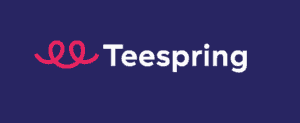Teespring will not forget its roots, but the online-only retailer is expanding beyond T-shirts.
The social commerce platform that allows shoppers to design and customize products is expanding into 50 new product categories
this year, including flags, picture frames and jewelry. Teespring also has changed its logo (no more T-shirt) and refreshed its color scheme.
Designers can use the platform to create products and sell them without having to establish ties to suppliers or carry inventory. Teespring sets a base cost for each product, such as a hoodie or tote bag, and it’s up to the designer to determine the price a consumer pays. The platform works as an on-demand model, where products are made once orders come in. This means designers incur no costs when selling through Teespring until a shopper buys their products.
Teespring charges a flat base fee per product—for example, $10 for a T-shirt—and then designers are able to decide on a total price.
Teespring co-founder and CEO Walker Williams says the company always planned to expand beyond enabling designers to create and sell T-shirts.
“We started with T-shirts because T-shirts are very universal,” he says. “They’ve got good margins for sellers and the supply chain (for Teespring) is relatively easy. The goal was always to build an e-commerce platform that allowed anyone with a great idea to bring it to market. It was just a matter of we wanted to make sure that we were great at our core competency.”
The future looks to be these small, extremely nimble brands.
Williams declines to specify an annual sales figure, but says Teespring has more than 100,000 designers selling through its site, with 10,000 new designers opening stores there every month.
“Our vision is that e-comm is heading toward microbrands, and the future looks to be these small, extremely nimble brands that speak to a small audience,” he says. Product category additions will begin accelerating through the middle of the year, with the goal to be at 50 product categories by year-end.
The company has 300 employees at its facility in Kentucky, where it makes and ships products. Williams says he will rely on word of mouth to raise awareness of the company’s strategy shift and not increase his ad spending.
Williams says it will take awhile for the market to realize that Teespring is more than a site to buy customized T-shirts or mugs. Because Teespring allows shoppers to set up a storefront on its website without having to build and maintain their own independent online store, “it’s now a viable alternative to Shopify,” he says. Shopify is an e-commerce platform vendor which primarily works with small to mid-sized businesses.
In March, Teespring began to automatically list eligible product campaigns on Amazon.com Inc.’s online marketplace. Designers are required to sell their product at a profit margin of at least $6.75 and opt in to Teespring Marketing, which deducts a set cost per order from a designer’s profit for using the service.
Favorite